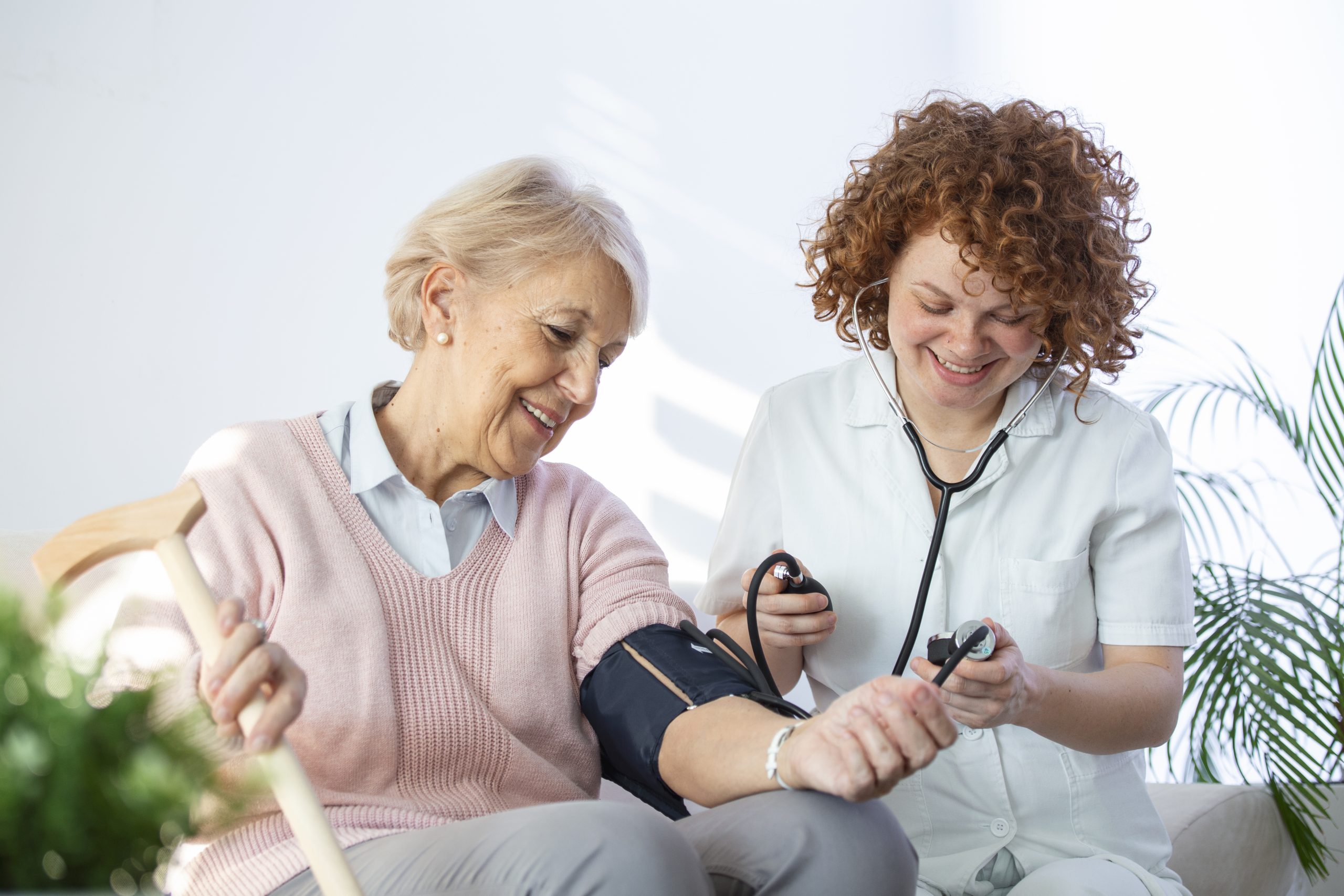If I had to recommend one key piece of healthcare equipment that older adults & caregivers should have at home, it would be this: a good home blood pressure (BP) monitor.
Why? Because BP measurements (and pulse measurements, which machines check at the same time) are an incredibly useful tool when it comes to assessing and optimizing an older person’s health and well-being. This is true even for those older people who aren’t being treated for hypertension (chronic high BP).
As I’d love for more older adults and families to understand how home BP monitors can help them, in this article I’ll explain how home BP monitors can be helpful specifically for older adults. (And then see my related article here: Choosing & Using a Home Blood Pressure Monitor, & What to Ask the Doctor .)
Here are three ways in which using a home BP monitor can help you. Each one illustrates a way that checking BP at home can help older adults and families get better help from the clinicians involved in their healthcare.
1.To check for serious illness. If an older person isn’t feeling well, changes in BP and/or pulse can help a doctor or nurse decide how likely it is that a serious illness is at hand.
In general, we doctors worry most about:
Heart rates that are much higher than usual (especially pulses above 100 beats per minute), and
BP that is much lower than usual (especially if the sitting systolic BP is less than 100)
When calling an advice line, caregivers can get better help over the phone if they are able to tell the doctor or nurse what the older person’s BP and pulse are.
Be sure to also explain how the older person seems different than usual, including any new or worse-than-usual confusion (which can be delirium).
Note that it’s helpful — though not required — to have a sense of how different the BP and pulse are from the person’s usual. This is why it’s good to keep a BP log if you can, and don’t forget to record the pulse with each BP measurement. (The easiest way to keep a log is to use a home BP monitor that easily transmits readings to an app or to the Internet.)
2. To help reduce fall risk by checking sitting vs standing BP. Did you know that many older people experience a drop in BP when they stand up? This is especially true in people who are taking medication to lower blood pressure. This can mean that an acceptable sitting BP drops to a potentially fall-inducing level right after the person stands, a problem sometimes called “orthostatic hypotension.”
Especially in older adults who have had falls or near falls, it’s important to check BP both sitting and standing. (This is a common trick in geriatrics, which other doctors may or may not suggest.)
I usually recommend a family consider a change in medication if standing BP drops to less than 110 systolic (that’s the top number), or if the drop in systolic BP is more than 20 points.
Families should also know that medications for enlarged prostate, such as tamsulosin (brand name Flomax) — as well as some other medications — may have the side-effect of reducing standing BP.
For more on medications that affect blood pressure and can cause falls, see this article: Preventing Falls: 10 Types of Medications to Review if You’re Concerned About Falling.
3. To check on the effect of a recent medication change. Since BP can be so important to how an older person feels, after a change in medication for BP or heart problems, I always encourage older adults and their caregivers to check the BP at home for 3-7 days. This can help families be proactive in helping doctors find the right dosing. After all, figuring out the right dose is often a matter of trial and error, but there’s no need to wait until the three-month follow-up visit to get help adjusting the dose.
At the time of the medication change, be sure to ask the doctor to specify what BP would be too high and too low. You’ll want to know:
What goal BP (in the sitting position) is the doctor or nurse aiming for?
What level of systolic BP — that’s the top number — should prompt a phone call? above 150? 170? 180? (Generally, the threshold for calling depends on the older person’s medical situation.)
Consider checking both sitting AND standing BP as mentioned above, especially if the older person has bad balance or is prone to falls.
Bear in mind that it’s common for BP to fluctuate a bit during the day, and even from one day to another.
This is why it’s helpful to check for a few days in a row, so that it becomes possible for doctors to figure out where the BP seems to be on average.
Here’s a true story from earlier this year, illustrating how a family used a home BP monitor to help a 91-year-old man with vascular dementia who was at high risk for falls. (We’ll call him Mr. A.)
Now, Mr. A had previously had a TIA (sometimes called a “mini-stroke”), so his doctors really wanted to keep his BP low with medication. However, because he often seemed wobbly at home, his family started checking his BP both sitting and standing, twice a day.
In doing this, they noticed two things. First of all, they noticed that Mr. A’s standing BP was almost always quite a lot lower than his sitting BP. In fact, his standing systolic BP (remember, that’s the top number in the reading) was often less than 100!
The other thing they noticed was that most of the low-standing BPs were in the morning. Although Mr. A’s BP would change with standing in the afternoon, the drop was smaller.
It was very helpful that the family was able to bring me this information. Together, we reviewed Mr. A’s medications, and we noticed that his morning BP measurement usually occurred about an hour after he’d take his morning medications, which included a small dose of once-daily antihypertensive called amlodipine.
Now, although amlodipine is usually taken once a day, based on the BP measurement data, we decided to try splitting the dose into a half-tablet, twice a day.
To everyone’s gratification (well, maybe not Mr. A’s since he tends to forget he’s on BP medication), the strategy worked: Mr. A’s standing BP in the morning got much better, and his BPs in the afternoon remained ok.
Best of all, he seemed to feel a little steadier and energetic, and his caregivers noticed that he seemed a little more willing to get up out of his armchair and get around the house with his walker.
Being able to check an older person’s blood pressure at home can be really helpful. Low standing BP is a common problem in aging adults, and can potentially cause a fall.
I generally recommend families get a home BP monitor if possible, and learn to use it. It’s especially helpful to check BP at home in the 3-7 days after doctors change any medications for BP or heart problems.
Otherwise, how often to check home BP really depends on the older adult, the family, and the medical situation. It’s not necessarily helpful to check every day no matter what; for older adults who feel well and haven’t had any medication changes, every 2-4 weeks is probably fine.
For more on checking blood pressure at home, see my related article here: Choosing & Using a Home Blood Pressure Monitor, & What to Ask the Doctor.
Remember, a home blood pressure monitor can really help older adults get better care, whether that’s for hypertension or to help gather key information during a potentially serious illness.
If you’ve already been using a home blood pressure monitor, kudos to you! If you haven’t gotten one yet, I hope this article will inspire you to do so.





